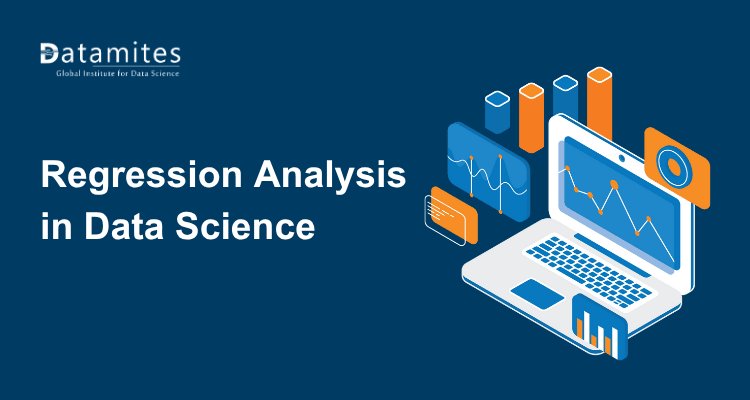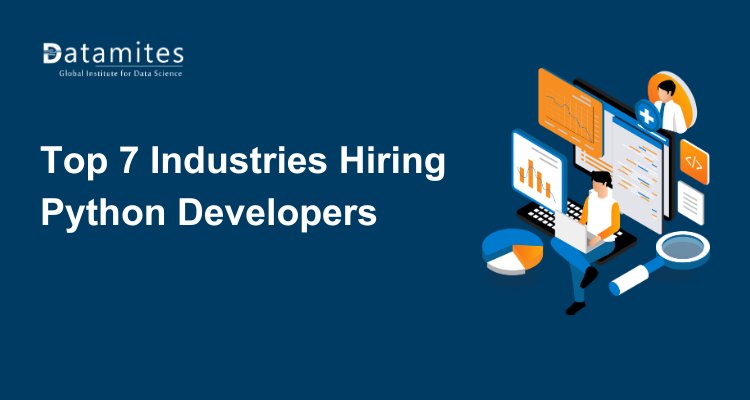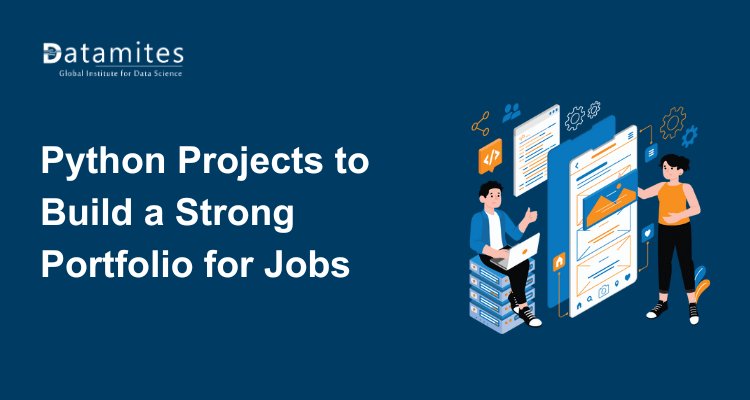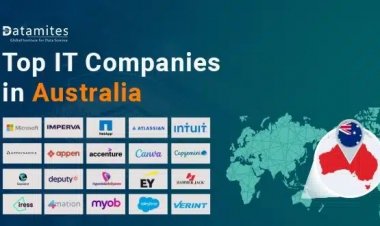What Is Regression Analysis in Data Science? A Beginner’s Guide
Regression analysis is a way to understand the relationship between variables and predict future outcomes. It’s a key tool in data science for spotting trends and making data-driven decisions.

Ever wonder how companies predict sales, weather apps forecast rain, or Netflix knows what you’ll binge next? That’s regression analysis at work. It’s one of the core tools in data science that helps make sense of messy real-world data. Whether you're a curious beginner or someone trying to level up your analytics game, understanding regression can unlock serious insight. Let’s break it down with real examples so it actually makes sense, and sticks.
What Is Regression Analysis?
At its core, regression analysis is about finding relationships between variables. You use it when you want to predict a numerical outcome based on other variables.
Say you want to predict a house’s price. You might look at square footage, number of bedrooms, and location. Regression analysis helps you figure out how those features impact the price.
It’s part of supervised learning, meaning you train a model on data where you already know the outcome (the “label”). The model then learns to predict that outcome for new data.
Regression vs. Correlation
- Regression isn’t the same as correlation.
- Correlation tells you how two variables move together.
- Regression actually builds a predictive model.
In other words, correlation is about association. Regression is about prediction.
Why Regression Analysis Matters in Data Science
Regression analysis isn’t just another statistical method, it’s one of the most useful data scientist tools can have. Why? Because it solves real problems. It helps companies make informed decisions based on data, not guesswork.
Let’s look at what makes it so essential.
1. It Turns Data Into Predictions
At its core, regression lets you take historical data and predict future outcomes. Whether it’s forecasting revenue, estimating demand, or identifying risk, regression analysis gives you a mathematical model to project what’s coming next.
And that’s valuable. In a 2024 survey by Dresner Advisory, over 60% of companies ranked predictive analytics as a top priority for their data initiatives, regression is a big part of that.
2. It's Interpretable (and Executives Like That)
Unlike black-box models like deep learning, regression models, especially linear ones, are easy to explain.
Example: “Every $1,000 increase in ad spend leads to $3,500 in extra revenue.”
That kind of clarity builds trust with stakeholders and makes your work actionable.
3. It Works Across Industries
Regression analysis in data science shows up in:
- Finance: Credit scoring, stock price prediction, portfolio risk.
- Marketing: Customer lifetime value, ad performance, churn modeling.
- Healthcare: Diagnosing disease risk, readmission prediction, drug efficacy.
- Retail: Inventory planning, pricing models, sales forecasts.
Statista reports that 60% of businesses adopting AI and machine learning begin with regression-based predictive models—it’s often the first step. In healthcare, MarketsandMarkets forecasts the predictive analytics market to hit \$28.1 billion by 2026, fueled in large part by the use of linear and logistic regression for clinical and operational decisions.
4. It's Fast to Prototype and Deploy
You don’t need a supercomputer or deep neural net to build a solid regression model. With tools like Python’s scikit-learn or R’s lm(), you can go from data to results in minutes.
And that speed matters. A Forrester report found that teams using lightweight models like regression are 50% faster at delivering insights compared to teams stuck in over-engineered solutions.
5. It’s a Launchpad to More Advanced Techniques
Learn regression well, and you’re halfway to understanding more complex models. Many machine learning algorithms, like decision trees, gradient boosting, and even neural networks, are built on the same core ideas: minimizing error, optimizing coefficients, and balancing bias and variance.
So whether you're building your first model or scaling enterprise-grade predictions, regression analysis is a practical, reliable foundation.
Refer to these articles:
- Hypothesis Testing in Data Science
- Mastering Data Wrangling in Data Science
- Ethical Challenges in Data Science 2025
Types of Regression Analysis
Not all regression models are the same. Let’s go through the major types you’re likely to encounter.
1. Linear Regression
This is the classic starting point. You predict one numerical outcome using one input variable.
Example: Predicting house price based on square footage.
A Zillow data study found that a simple linear regression using square footage alone could explain over 50% of the variation in home prices in major U.S. cities.
2. Multiple Linear Regression
Here, you predict a single outcome using multiple input variables.
Example: Predicting sales based on ad spend across platforms, seasonality, and store location.
A Nielsen study showed that multi-channel marketing regression models helped companies improve ROI by 25–30%, especially when adding seasonality and customer segmentation into the equation.
3. Logistic Regression
Despite the name, this one’s for classification, not prediction.
Example: Predicting whether a customer will churn (yes/no).
Telecom companies like Verizon and T-Mobile rely on logistic regression to estimate churn probabilities. According to Deloitte, a 5% increase in retention driven by models like these can boost profits by 25–95%.
4. Polynomial Regression
What if your data isn’t linear?
Polynomial regression lets you fit curves instead of lines by adding powers of your input variables.
Example: Modeling depreciation curves in manufacturing equipment, where wear and tear doesn’t follow a straight line.
5. Ridge and Lasso Regression
These are regularized versions of linear regression. They’re designed to prevent overfitting, especially when you have lots of features.
Use cases? Think eCommerce. Amazon’s pricing models reportedly include hundreds of variables, from weather to customer reviews. Regularization ensures the model doesn’t go off the rails with noisy features.
How Regression Fits into the Data Science Workflow
Here’s how you usually use regression in a data science project:
1. Data Collection and Preprocessing
You gather your data, clean it up, handle missing values, and prepare it for modeling.
According to Anaconda’s 2024 State of Data Science report, data cleaning takes up 45% of a data scientist’s time, more than any other task, including modeling.
2. Exploratory Data Analysis (EDA)
You look at relationships between variables, scatter plots, distributions, correlations. This is where you often spot linear or non-linear trends.
3. Model Building and Evaluation
You train your regression model and measure its performance using:
- R² (R-squared): How much of the variance your model explains.
- RMSE (Root Mean Squared Error): How far off your predictions are, on average.
- You tweak, validate, and iterate.
Refer to these articles:
- How To Become A Data Scientist
- The Role of Data Science in Cyber Security
- How Generative AI is Changing the Role of Data Scientists
Real-World Regression Examples in Data Science
Here’s how regression analysis shows up in real projects:
Predicting Customer Churn
Use logistic regression to predict whether a customer is likely to cancel their subscription. Inputs might include time on platform, number of logins, or customer support interactions.
According to Gartner, reducing churn by just 1% can save a SaaS company up to $1 million annually depending on scale.
Forecasting Demand
Multiple linear regression helps forecast product demand based on season, promotions, weather, and more.
Walmart uses regression-based forecasting to optimize inventory across thousands of SKUs. Missed forecasts can cost retailers $70 billion per year globally due to overstock and stockouts.
Medical Diagnosis
Logistic regression can estimate the probability of disease given patient symptoms and lab values.
Stanford researchers used logistic regression models to predict hospital readmission rates with over 80% accuracy using just a handful of features.
Credit Scoring
Regression models assess the likelihood of loan default based on income, credit history, and other features.
According to FICO, logistic regression remains the foundation of most commercial credit scoring systems, even in the age of neural networks.
Common Challenges and Mistakes in Regression Analysis
Regression is powerful, but it’s easy to get wrong if you ignore the assumptions.
1. Overfitting the Model
Overfitting is when your model memorizes the training data, including the noise, and performs poorly on new data. It’s often caused by too many features, a small dataset, or an overly complex model. Fix it with cross-validation, regularization (Ridge or Lasso), and by trimming unnecessary variables.
2. Multicollinearity
When input features are highly correlated, it can make your model’s coefficients unstable and hard to interpret. You’ll spot this with high correlation values or VIF scores above 5–10. To fix it, remove or combine correlated features, or use a model that handles it better, like Ridge regression.
3. Ignoring Model Assumptions
Linear regression assumes linearity, independence, constant variance, and normal residuals. If you skip checking these, your model might run, but the results won't be trustworthy. Use residual plots and transformations to catch issues. Many studies overlook this step, don’t make the same mistake.
4. Using the Wrong Type of Regression
Linear regression isn’t a one-size-fits-all tool. Use logistic regression for binary outcomes, polynomial for curved relationships, and time series models for sequential data. Choose your regression type based on the shape and structure of your problem.
5. Forgetting to Validate the Model
Training accuracy is meaningless without validation. A single train-test split isn’t enough, use k-fold cross-validation, bootstrapping, or holdout sets to make sure your model generalizes to unseen data.
6. Poor Feature Engineering
More features can mean more problems, like noise, redundancy, or overfitting. Focus on variables with real predictive power. Use domain knowledge, remove irrelevant data, and keep your inputs clean. On Kaggle, the best models often win by smart feature work, not fancy algorithms.
7. Misinterpreting Coefficients
Big coefficients don’t always mean big importance. Scale, units, and multicollinearity all affect how coefficients behave. Standardize your inputs for fair comparisons. And remember: regression reveals correlation, not causation.
Violating these can lead to misleading results. According to a study by the Journal of Statistical Software, over 35% of published regression studies fail to test for these assumptions explicitly.
Refer to these articles:
Tools and Libraries for Regression Analysis
If you're doing regression in data science, you’ll likely be using either Python or R, both offer solid libraries that make modeling fast and efficient.
Python
- Scikit-learn: Great for building and evaluating regression models.
- Statsmodels: Excellent for statistical summaries and diagnostics.
R
- lm(): Simple and powerful for linear models.
- caret: A flexible package for training and tuning models.
Both languages are solid choices, pick the one that fits your workflow.
Regression analysis isn’t just a math exercise; it’s how data starts to tell a story. Whether you're predicting housing prices, sales trends, or user behavior, it gives you a way to connect the dots and make smarter decisions. As you dive deeper into data science, mastering regression is a solid first step. So don’t stop here. Try running a simple regression yourself. Play with real data. See what patterns you uncover. That’s where the real learning begins.
If you're thinking about a career in data science, this is the right time to get started. Enrolling in a data science institute in Ahmedabad, Bangalore, Chennai, Pune, Coimbatore, or Mumbai can equip you with the practical skills, project experience, and career support needed to break into the field. From fraud detection to algorithmic trading, data science is reshaping the financial sector, making it one of the most dynamic and future-focused industries out there.
One institute that consistently stands out in this space is DataMites Institute. With an industry-relevant curriculum and a strong focus on hands-on learning, DataMites helps learners build real-world experience through live projects and internships, bridging the gap between theory and application.
The Certified Data Scientist programs from DataMites are backed by IABAC and NASSCOM FutureSkills, giving you exposure to key tools, machine learning workflows, and advanced analytics, skills that are in high demand across finance and beyond. If you prefer classroom-based learning, DataMites offers offline data science training in Mumbai, Bangalore, Pune, Chennai, Hyderabad, Ahmedabad, and Coimbatore. For added flexibility, their online programs bring high-quality data science education to learners worldwide, no matter where you're based.





